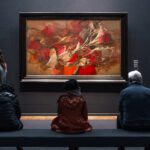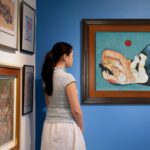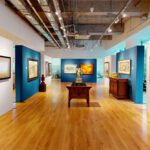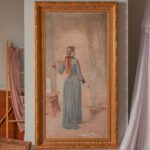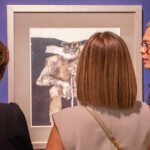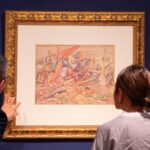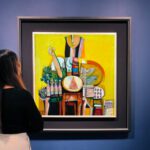Amidst the uncertainties of today, one can continuously find solace within the spaces you create. In many ways, the personal touch that we add to curating our inner worlds becomes reflective of the life we choose and the pieces we love.
While some find joy in collecting paintings and sculptures, others are more drawn to finding objets d’art, antique furniture, and other valuable collectibles for their spaces— for them, these are the pieces that hold history, that have been part of long-standing traditions, or have been passed from one generation to the next
The Well-Appointed Life ‘Connoisseur Collection’ auction will showcase a rich collection of objects with fine aesthetic qualities and outstanding provenance crafted by international and local master artisans. The collection’s mesmerizing diversity – exquisite solid ivory religious objects, finely carved ethnographic art, and sterling examples of the finest Philippine hardwoods — are all curated with the intention of showing collectors and enthusiasts how diverse pieces can go together.
This year’s The Well-Appointed Life carries the theme, ‘The Worlds We Create,’ takes place on Saturday, 18 September 2021 live at Salcedo’s NEX Tower sale room and simultaneously online at 11am.
Religious Objects:
A huge Crucifixion tableau in a virina and arch. 19th century, Christ: solid ivory and glass eyes / other figures: ivory head, hands and feet / wooden body / glass eyes / gilt silver accoutrements possibly gilt silver / jusi / satin vestments / (later replacements); glass eyes / kamagong cross / silver accoutrements; glass virina / gessoed and gilt wooden arch and base / blown glass / shellcraft / and other decorations
In the Bible, Calvary, also known as Golgotha, is mentioned as a place on a hill. Artists throughout history have striven to depict the Crucifixion in an attempt to bring one of the most poignant events in Christianity to life. During the Spanish occupation of the Philippines, most affluent families would commission a tableau using expensive ivory for the images, and then enshrine this within an elaborate wooden niche, urna, or place it inside a glass virina on top of the home altar for veneration. In this ‘Large Crucifixion tableau in a virina and arch,’ the Expirante Corpus or Expiring Christ is carved masterfully using solid ivory to emphasize the realistic anatomical details and proportion, drawing attention to His head looking up towards heaven on his right with an agonizing but calm gaze, and to the marvellously complex draping of his loincloth. He seems oblivious to the outpouring of grief and anguish below the Cross from the Virgin Mary, St. John the Beloved, and Mary Magdalene.
The image of the innocent Sleeping Child in the humble manger has long caught the imagination of local collectors, befittingly as the focal figure of the Nativity. Images of the Niño Dormido have been made from various materials such as wood, resin, and escayola or plaster. The Child and the accompanying bed can be rudimentary as being bare naked lying in a wooden joint bed, or as extravagant as gold adorned ivory on a silver filigree, bejewelled four-poster bed. For the Niño, the most coveted ones have been those made in solid ivory like this one. His heavy-lidded almond-shaped eyes are slightly open as if in a peaceful dream, his right index finger slightly caressing his lips leading anon to a natural sucking instinct. The round face, prominent ears, neck line, rotund stomach, and fleshy plump rolls on the arms and legs are not only manifestations of good health but have symbolic royal or kingly association in Buddhist carving tradition, indicating a Chinese carver or a Filipino copying from an early Chinese work. The perfect anatomy, realistic details, and meticulous features like the gap between the arms and the body, and one leg over the other are trademarks only a true master carver can execute successfully. This piece can very well fit – in terms of age, size and craftsmanship – in the same category as those examples found in museums and noteworthy private collections.
A masterfully carved “Santo Cristo” with style diagnostics and natural aged patination of 17th century carved ivory. The body follows the forward orientation of the tusk, resulting in a rigid and strong musculature. His head looks up to heaven, the integrated thick overlapping thorny crown deeply embedding it with unimaginable excruciating pain, His painted eyes are fully open, His hair carved as long curly strands that fall over the shoulders, the partially open mouth – framed with hair curling at the ends – reveals carved teeth. The muscles and veins of His arms and body tense and pop through the skin while His supinated hands stiffen, suggesting a last brave gasp of breath before His final submission. The intricately carved loincloth is gathered and held with a central tuck in the front and knotted to drape on His right. The later circular cross is carved with grapes and foliage on interlacing vines, mounted on a base referencing the rocky hill of Golgotha.
Tribal Artifacts
The religion of the Ifugao is based on ancestor worship and the veneration of spirits and gods of nature. Rice deities are particularly revered. These bu’luls are activated through ritual – the guardian figures believed to contain spirits capable of ensuring abundant harvests, increasing rice yields, and protecting against catastrophes. Shaped like a rice mortar, the distinctive base of the sculpture is a visual link to its spiritual purpose. The pairing of male and female is a fundamental feature of Cordillera’s ancestral art. These bu’lul guardians represent the harmonious union of opposing elements, the protection of communities from malevolent spirits, and the promise of good fortune. Carved from auspicious red Narra wood, these sculptures are differentiated by their genitalia, alluding to fertility and abundance. The figures have a rich patina of sacrificial blood and smoke resulting from their use in religious practice and life cycle ceremonies. (Reference: Museum of Cordilleran Sculpture Gallery of Exhibits)
The figures stand on a squarish hourglass-shaped base representing a stylized rice mortar. The eyes are shown as lozenge-shaped forms with circular holes bored in the center to indicate the pupils. The lips are slightly pouting, the ears appear as tab-like semicircular forms protruding markedly from either side of the head. The lobe of the ears are pierced with circular holes which would once have held ear ornaments or rice stalks. The shoulders are broad while the torso appears as a tapering triangular form. The legs are muscular with the knees slightly bent and feet are plank-like forms. The base of the figures are somewhat eroded.
Pieces for the Illustrado Home:
The most coveted and envied aparador style that only the wealthiest and the most influential principalia families of the 19th century colonial could possess, the form that became known as the ‘Manila aparador’ originated in Binondo, and eventually spread its ripple to Ilocos in the north and Laguna in the south, giving way to some provincial stylistic variations in the process. Classical Greek, Roman and Egyptian motifs and dark finish that became de rigueur again in the early 19th century are clearly evident: the elegant rectilinear silhouette of the carcase; the half-round Roman composite columns carved with Greek upright acanthus leaves and volutes, reeded shafts and turnings; the raised center of each door line inlaid with inverse C-scroll at the corners while the sides of the cabinet have conforming inlays; the entablature of reverse cove frieze with line inlays enclosing the alternating round and diamond inlay patterns, topped by a detachable cornice crown masterfully decorated with fine marquetry of flowers, foliates and berries; line inlaid truncated apron with angular center accentuated by a sunburst of contrasting color inlays; the Egyptian lotiform feet with contrasting color petal inlays; and the use of highly prized kamagong wood for added drama and preciosity. Inside are 3 shelves and a pair of drawers underneath with brass keyhole surround escutcheons and bail handles. Except for the silver keyplate, the whole cabinet, decorative parts and inlays are all original and in very good condition.
A large comoda decorated with exceptionally boisterous inlay design by the fabled Pampanga master. The framed top (except the back) has eased front edge and ogee bullnose back edge. Below are two small ‘kahonitos’ and two large drawers, tucked secretly in the center is a removable box to hide valuable items. Ostensibly supporting the drawers above and flanking the cabinet below carved with circular-raised door centers are four kamagong posts finely carved with ball-ring-spool-cylinder turnings embedded around fascia enclosure, which rises on bulky turned feet. Though this configuration may resemble that of the comodas produced in neighboring Bulacan province, the complexity of the design, luxurious amount and the consummate elegance of the inlay decoration sets this piece exceptionally apart from others. On the frame and edges are alternating lozenge and rondel (with or without dotted centers) bone inlays on the kamagong band enclosed by lanite border inlays. On the drawer fronts and doors are triangular and lozenge bone inlays forming semi circles, circles, flowers and sunbursts. And on the drawer fronts, cabinet frame and front fascia are bone lozenges and triangular-shaped leafy scrolls and loops in lanite strings with rondel tips running sinuously and purposely.
The World of Juan Luna
1) Le Petit Parisien, French supplement newspaper featuring the story of Juan Luna and his murdered wife and mother-in-law. 2) Juan Luna receiving King Umberto I and Queen Marguerite of Savoy at the Palazzo delle Esposizione in Rome for the next Exposición General de Bellas Artes in which he was awarded for “Spoliarium,” old engraving.
The article accompanied by a cartoon titled ‘Spolorum’ parodies the politics at the time, showing personalities such as Spanish government ministers as characters in Luna’s award-winning magnum opus
Delicate engraving included in Suplemento Artístico , of La Ilustración Artística , unframed. The original artwork by Luna was awarded with a Diploma de Honor at the Artistic Exposition Of Munich in 1883.
Two Hundred Pesos Fuertes was released to Lieutenant Jose Orendain of the Tiradores Regiment, with the approval of the Chief of Operations, General Antonio Luna at Kalumpit, Bulacan. In less than two months, Luna was killed by Aguinaldo’s presidential guards.
The World of Jose Rizal
- Orden de los Caballeros de Rizal. Manila Grand Opera House, 29 December 1947
- Rizal Day Celebration. Rizal City, 29-30 December 1947
- Rizal Day Souvenir Program. Luneta, City of Manila, 30 December 1948
- Rizal Day Souvenir. Luneta, City of Manila, 30 December 1947
- Dr. Jose Rizal’s First Formal Schooling. Biñan, Laguna, 19 January 1949













